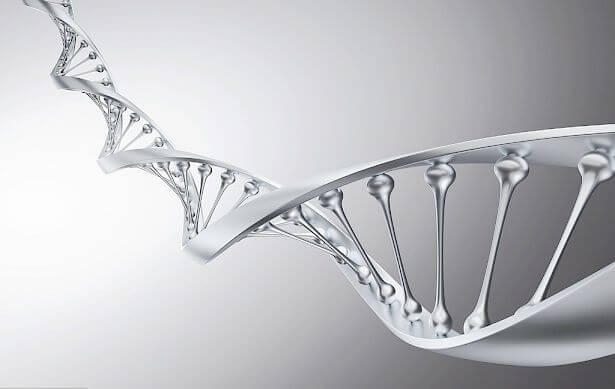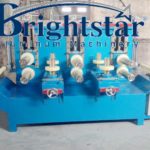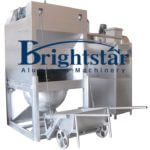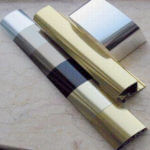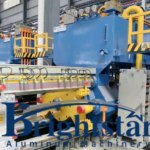Glossary of Aluminium Industry Terms
Glossary of Aluminium Industry Terms
Brightstar Aluminum Machinery offers the following machines:
aluminum profiles automatic film applicator machine,
single piece aluminum profile automatic bagging machine,
aluminum profiles shape corrector machine,
aluminum profiles surface defects brushing and cleaning machine,
wood grain effect sublimation machine and auxiliary equipment for our customers.
Total solution and package deal.
| Age Hardening | An aging process that results in increased strength and hardness. |
| Aging | Precipitation from solid solution results in a change in properties of an alloy, usually occurring slowly at room temperature (natural aging) and more rapidly at elevated temperatures (artificial aging). |
| Alloy | A substance with metallic properties, composed of two or more chemical elements of which at least one is a metal. More specifically, aluminum plus one or more other elements produced to have certain specific, desirable characteristics. |
| Aluminum | A silver-white soft metal, noted for its lightness, high reflectivity, high thermal conductivity, nontoxicity, and corrosion resistance. It is the most abundant metallic element, comprising about 1/12th of the earth’s crust. It is never found in nature as an elemental metal, but only in combination with oxygen and other elements. In ordinary commercial and industrial use, the word aluminum is often understood to mean aluminum alloy, rather than pure metal. |
| Angularity | Conformity to, or deviation from, specified angular dimensions in the cross-section of a shape or bar. |
| Annealing | A thermal treatment to soften metal by removal of stress resulting from cold working or by coalescing precipitates from solid solution. |
| Anodizing | Forming a coating on a metal surface produced by electrochemical treatment through anodic oxidation. This process may be used to increase the protective effect of aluminum’s transparent natural oxide surface. It may also be given a decorative coloration. |
| Architectural Finish | An architectural finish is a standard finish characterized by a uniform appearance. This finish is most often specified for exposed surfaces. |
| Backer
(back-up plate) |
A tool, or reinforcing part, which presses against the outer surface of an extrusion die, supporting it against the pressure of the extruding metal. The backer has an opening larger than the die aperture, allowing the extruded product to emerge without marring its soft surface. |
| Bar | A solid extrusion that is long in relation to cross-section, which is square or rectangular (excluding plate or flattened wire) with sharp or rounded corners or edges; or is a regular hexagon or octagon; and in which at least one perpendicular distance between parallel faces is 0.375 inch or greater. (Smaller sizes are classified as wire.) |
| Bar, Extruded | Bar brought to final dimensions by hot extruding |
| Bearing | The surface of the extruding aperture, at right angles to the die face, controls metal flow and to some extent speed of flow which is also the conforming surface along which the aluminum flows. |
| Billet Container | The part of an extrusion press into which the billet to be extruded is placed. |
| Billet, Extrusion | May be solid or hollow in form, commonly cylindrical, used as the final length of material charged into the extrusion press cylinder. It is usually a cast product, but may be a wrought product or sintered from powder compact. |
| Blister | A raised area on the surface of an extruded product due to subsurface gas expansion during extrusion or thermal treatment. |
| Blister, Coating | A blister in the coating of an alclad or a clad product. |
| Blistering | A defect in the paint film appears as bubbles, usually caused by the expansion of air, solvent vapor, or moisture trapped beneath the film. |
| Bolster
(die block) |
A tool, or reinforcing part, which supports the backer — which, in turn, supports an extruding die against the pressure of extrusion. |
| Bridge | In extrusion: the part of an extrusion bridge die that supports a void-forming mandrel. During extrusion, the metal divides and flows around the bridge, reuniting as it is extruded through the die orifice. The resulting weld line can be detected upon microscopic examination, but the extrusion appears functionally and visually seamless. |
| Bright Dipping | Chemical polishing of aluminum, often by treatment with a mixture of nitric acid and phosphoric acid, yields a mirror-shiny (specular), highly reflective surface. It is almost always followed by anodizing to protect the surface and provide some choice of colors. |
| Buffing | A mechanical finishing operation in which fine abrasives are applied to a metal surface by rotating fabric wheels for the purpose of developing a lustrous finish. |
| Burr | A thin ridge of roughness is left by a cutting operation such as slitting, trimming, shearing, blanking, or sawing. |
| Butt | The unextruded portion of the billet remaining in the container after the extrusion cycle is completed. The butt varies in thickness depending upon the alloy, die configuration, and extruded profile characteristics. |
| CAD | Computer Assisted Design. The use of computer programs to generate, analyze and modify designs. Extrusion dies and their supporting tools, for example, may be designed with the aid of computers. |
| Caustic | (Sodium Hydroxide, NaOH and derivatives). The active ingredient in an alkaline bath, generally with a pH higher than 10, which removes aluminum from used extrusion dies by etching. The primary ingredient, Caustic Soda (NaOH), dissolves the aluminum alloy by chemical reactions with no affect on the die steel. |
| Chalking | A white powdery deposit on the surface of the exposed paint film caused by weathering. |
| Chatter | A surface defect consisting of alternating ridges and valleys at right angles to the direction of extrusion. |
| Coefficient of Thermal Expansion | The relative rate at which a substance expands on heating, compared to a standard rate. |
| Concentricity | Conformance to a common center as, for example, the inner and outer walls of round tube. |
| Container | The steel cylinder, usually fitted with a removable liner, having an inside diameter slightly larger than the billet to be extruded which holds and confines the billet during the extrusion cycle. Its length may vary with the press tonnage rating and manufacturer. |
| Conversion Coating | A chemical layer formed on the metal in the pretreatment process which aids in paint adhesion and corrosion resistance. |
| Corrosion | The deterioration of metal by chemical or electrochemical reactions with substances in its environment. |
| Corrosion, Stress Cracking | Failure by cracking resulting from selective directional attack caused by the simultaneous interaction of sustained tensile stress at an exposed surface with the chemical or electro-chemical effects of the surface environment. The term is often abbreviated SCC which correctly stands for stress corrosion cracking. |
| Deburring | Removing burrs, sharp edges, or fins from metal parts by filing, grinding, or tumbling. |
| Deflection | The distortion or bending of the die or components thereof. Insufficient support of die will cause it to deflect, lessening the effectiveness of the bearing; also termed dishing, caving, and sagging. |
| Density | Weight per unit of volume (for example pounds per cubic foot). The density of aluminum is only about one-third that of steel, and this weight-saving characteristic is one of aluminum’s best-known advantages. |
| Die | In extrusion a tool with an opening through which heated aluminum is forced by pressure, taking on that cross-sectional shape. |
| Die Face | The surface of an extrusion die facing the billet. |
| Die, Hollow | A steel extrusion tool which forms extruded closed profiles containing one or more voids such as rectangular tubing. The tool generally consists of a die cap that generates the outer surface of the profile and the mandrel or core which generates the inside contour. Hollow or semi-hollow profiles are produced usually with either bridge, porthole or spider (taper seal) type dies or variants thereof. Extruded sections produced on such dies have seams or longitudinal weld lines, due to the metal flow around the web supports (bridges) that hold the mandrel. The latter determines the inside contour of the profile being extruded. After flowing around the supports, the metal is fused in a weld chamber before passing through the die (die cap) properly. |
| Die Lines | A longitudinal depression or protrusion formed on the surface of drawn or extruded material. Die lines are present to some degree in all extrusions and are caused by a roughening of the die bearing. |
| Die, Porthole | A die having several openings for the extrusion of separate parts of an object ater formed by the welding or fusing together of these parts. |
| Die Ring | A cylindrical sleeve that holds the die and backer in axial relationship to each other. |
| Die, Semihollow | A circular steel extrusion tool which forms an open profile with a high tongue ratio. Generally this tongue ratio is greater than three to one. This type of die is similar to a hollow die. The tongue is protected by a web or bridge which reduces the billet pressure. When possible, for maximum support the tongue should be bolted to the web. |
| Die, Solid | A steel disk, with one or more orifices or apertures, of similar cross-section and contour as the desired product, through which metal is forced forming open profiles such as bar, channel and angle. |
| Drawn Product | A product formed by pulling material through a die. |
| Electrostatic Spraying | Application of a coating by applying a static electricity charge to the droplets of a spray and an opposite charge to the part being sprayed, which then attracts the droplets directly to its surface. |
| Elongation | The percentage increase in distance between two gauge marks that results from stressing the specimen in tension to fracture. The original gauge length is usually 2 inches for flat specimens and round specimens whose diameter is 0.5 inch, or four times the diameter for specimens where that dimension is under 0.5 inch. Elongation values depend to some extent upon size and form of the test specimen. For example, the values obtained from sheet specimens will be lower for thin sheet than for thicker sheet. |
| Embossing | Raising a design in relief against a surface. |
| Extrude | To force the material through a die by pressure. |
| Extruded Length | The length of a profile (section) is extruded in a single push. |
| Extruded Profile | A profile usually of constant cross-section brought to final dimensions by extruding. The preferred term describing an extrusion formerly termed an extruded shape. |
| Extruded Shape | Any aluminum extrusion other than rod, bar, or tube. |
| Extrusion Billet | The starting stock for the extrusion operation. Extrusion billet is a solid or hollow form, commonly cylindrical and is the length charged into the extrusion press cylinder. It is usually a cast product but may be a wrought product or powder compact. |
| Extrusion Butt End Defect | A longitudinal discontinuity in the extreme rear portion of an extruded product, which is normally discarded. |
| Extrusion Defect | A cone-shaped abnormality such as a cavity in an extruded product (ring in a hollow profile or tube) formed in the extreme rear portion, if extruded too far. |
| Extrusion (Indirect) | The method of extruding where the die is at the ram end of the billet and the product travels through the hollow ram and in the opposite direction. |
| Fabricate | To work a material into a finished state by machining, forming or joining. |
| Fatigue | The tendency for a metal to break under conditions of repeated cyclic stressing considerably below the ultimate tensile strength. |
| Fatigue Strength | The maximum stress that a metal can sustain for a specified number of cycles without failure. |
| Finish | In extrusion, the condition, quality or appearance of the final aluminum surface. Aluminum can be finished in a very wide variety of textures and colors. |
| Finishing | Usually secondary operations are applied to extrusions to improve product dimensionally or change surface condition (etching) or color (anodizing, plating, painting, buffing, etc). |
| Flow Line | (1) Lines on the surface of painted sheet, brought about by incomplete leveling of the paint. (2) The line pattern revealed by etching, which shows the direction of plastic flow on the surface or within a wrought structure. |
| Grain Size | A measure of crystal size usually reported in terms of average diameter in millimeters, grains per square millimeter, or grains per cubic millimeter. |
| Heat-Treatable Alloy | An aluminum alloy that can be hardened to produce desired properties by a controlled cycle of heating and cooling. |
| Heat Treating | Heating and cooling a solid metal or alloy in such a way as to obtain desired conditions or properties. Commonly used as a shop term to denote a thermal treatment to increase strength. Heating for the sole purpose of hot working is excluded from the meaning of this definition — see Solution Heat Treating. Aging. |
| Hollow Billet | A billet prepared for extruding seamless tube or pipe. The outside diameter may be scalped and the inside diameter may be bored or cast hollow to assure sound metal. |
| Impact | A part formed in a confining die from a metal slug, usually cold, by rapid single stroke application of force through a punch, causing the metal to flow around the punch and/or through an opening in the punch or die. |
| Ingot | A cast form suitable for remelting or fabricating. |
| Kerf | The notch or slit made by a saw or torch when cutting. |
| Lap Joint | A joint formed with one member overlapping the other; the simplest type of nesting joint. |
| Light Walls | Undersized wall dimensions often caused by shifting or caving of mandrel or housing section of hollow die. |
| Line, Flow | The line pattern which shows the direction of flow on the surface. |
| Machinability | The relative ease of working a metal with machine tools. Aluminum has good machinability. |
| Mandrel | The fixed or floating projection positioned in the die opening that forces metal to flow around it. The wall thickness of the extrusion is determined by the difference in the dimensions of the die aperture and the mandrel. |
| Mechanical Properties | Those properties of a material that are associated with elastic and inelastic reaction when force is applied, or that involve the relationship between stress and strain; for example, modulus of elasticity, tensile strength, endurance limit. These properties are often incorrectly referred to as physical properties. |
| Mil | A unit of length; 0.001 inch. |
| Mill Finish | Mill finish is the finish obtained by standard extrusion practices and produced without the aid of any subsequent operations. This finish generally varies from a structural finish with surface imperfections to an architectural finish with uniformly good appearance. |
| Milling | Removing metal with a machine tool something like a rotary chisel. |
| Nitriding | The introduction of nitrogen into the surface of tool steels by holding at a suitable temperature in contact with a nitrogenous material, usually ammonia, to produce a hard wear resistant case. |
| O.D. (Outside Diameter) | The nominal overall measurement of tube or pipe diameter measured across its outer perimeter because of variations in actual wall thickness, it does not necessarily indicate true dimensions at all location. |
| Open Space Dimension | A dimension, across a part of an extruded cross-sectional shape which only partially encloses a space, whose length includes more than 25 percent space, versus metal. |
| Orange Peel | (1) Surface roughening on formed products which occurs when large grains in the metal are present. (2) An irregularity in the surface of a paint film resulting from the inability of the wet film to level out, or become smooth after being applied, thus resembling the surface of an orange. This finish may be considered desirable or a defect depending on the end-use. |
| Oxide | A chemical compound of oxygen with another element. Hydrated (water-including) iron oxide is called rust; it does not cling tightly to the underlying metal, so the oxidation process is progressive and iron easily rusts away. Aluminum oxide is a hard, transparent compound that clings tightly to the underlying metal and protects it against further oxidation. |
| Pickup | Small particles of oxide adhere to the surface of a product at irregular intervals. |
| Pigment | An insoluble coloring agent suspended in a fluid medium, as in inks, lacquers, and paints. |
| Pipe, Seamless | The pipe that does not contain any line junctures (metallurgical welds) resulting from the method of manufacture. This product may be produced by extruding or by drawing, using either die-and-mandrel or hot-piercer processes. (Typically used for fluid-carrying applications under pressure.) |
| Polishing | Smoothing a metal surface, usually by rubbing with fine abrasives. A mechanical finishing operation for the purpose of producing a gloss or luster on the surface of a product. |
| Powder Coating | Application of a coating in the form of a finely ground powder of coloring agents, resins, and additives; heating of the part, either before or after powder deposition, fuses the powder into a continuous coating. |
| Preheating | A high temperature soaking treatment to provide a desired metallurgical structure. Homogenizing is a form of preheating. |
| Press, Extrusion | The hydraulic machine which applies pressure to an aluminum billet inside a container, extruding it through the opening of a die. |
| Profile | A product that is long in relation to its cross-sectional dimensions, having a cross-section other than those of wire, rod, bar, and tube, produced by extrusion, rolling, drawing, or cold finishing. Formerly termed a shape. |
| Profile, Extruded | A profile produced by hot extruding. |
| Profile, Hollow | A profile, any part of whose cross-section completely encloses a void. |
| Profile, Semihollow | A profile any part of whose cross-section is a partially enclosed void the area of which is substantially greater than the square of the width of the gap. The ratio of the area of the void to the square of the gap is dependent on the class of semihollow profile, the alloy and the gap width. |
| Quenching | Controlled rapid cooling of a metal from an elevated temperature by contact with a liquid, a gas, or a solid. |
| Ram | The press component which applies force against the dummy block. Ram and stem are interchangeable terms describing any extension of the main cylinder in an extrusion press. |
| Salt Spray | Corrosion test using salt-sprayed as a mist in a heated humidity chamber to simulate seashore conditions, or to accelerate corrosion at a controlled rate. |
| Seamless | A hollow product that does not contain any line junctures resulting from the method of manufacture. |
| Semihollow Profile | An extruded profile, any part of whose cross-section partially encloses a void, the area of which is substantially greater than the square of the width of the gap. |
| Snap-fit Joint | A self-locking joint whose mating parts exert a cam action, flexing until one part slips past a raised lip on the other part, preventing their separation |
| Standard Tolerance | An established dimensional tolerance for a certain class of product. |
| Starving Wall | Light walls on the extruded profile are caused by a restricted flow of metal before the bearing entry. |
| Straightness | The absence of divergence from a right (straight) line in the direction of measurement. |
| Stretch Straightening | The process of stretching extruded sections beyond the yield strength of the alloy to achieve longitudinal straightness. |
| Temper | The combination of hardness and strength imparted to metal by mechanical or thermal treatments and characterized by certain metallurgical structures and mechanical properties determining temper designation. |
| Tolerance | Allowable deviation from a nominal or specified dimension. |
| Tongue | That portion of die cap metal surrounded by the aperture except at one end which is termed the base of the tongue. |
| Tool | A term usually referring to the dies, mandrels, etc., used in the production of extruded or drawn profiles or tubes. |
| Tool Rub | A surface area showing a scratch or abrasion resulting from contact of the hot extrusion with the press equipment or tooling or, in the case of multi-hole dies, with other sections as they exit the press. |
| Twist | (1) For rolled products, a winding departure from flatness. (2) For extrusions, a winding departure from straightness. |
| Welding | Joining two or more pieces of aluminum by applying heat or pressure, or both, with or without filler metal to produce a localized union through fusion or recrystallization across the interface. (In cold welding, it is a solid-state welding process in which pressure is used at room temperature to produce coalescence of metals with substantial deformation at the weld.) |
Contact us now to obtain a reliable no-obligation quotes on your aluminium machines!

